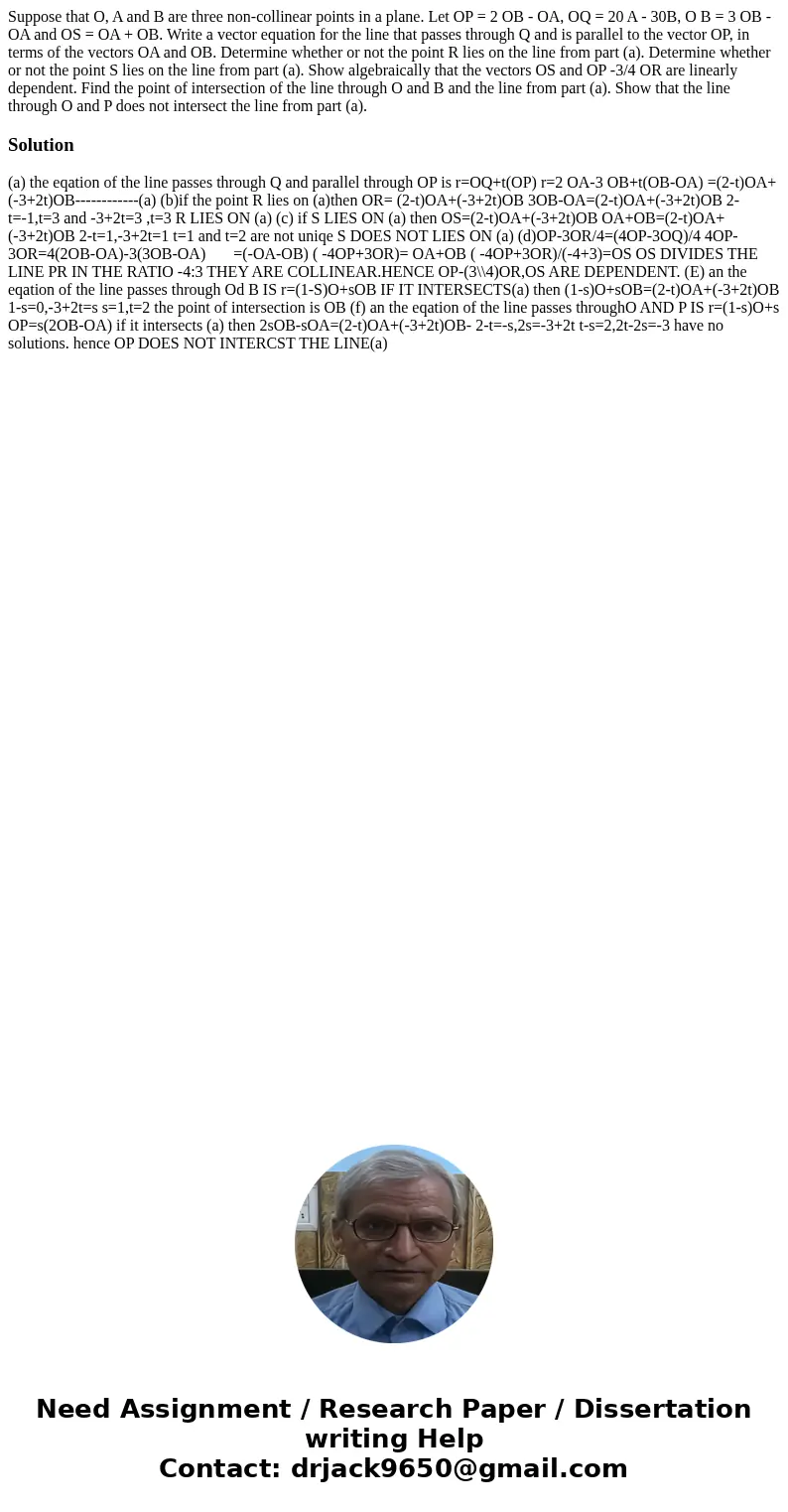Suppose that O A and B are three noncollinear points in a pl
Solution
(a) the eqation of the line passes through Q and parallel through OP is r=OQ+t(OP) r=2 OA-3 OB+t(OB-OA) =(2-t)OA+(-3+2t)OB------------(a) (b)if the point R lies on (a)then OR= (2-t)OA+(-3+2t)OB 3OB-OA=(2-t)OA+(-3+2t)OB 2-t=-1,t=3 and -3+2t=3 ,t=3 R LIES ON (a) (c) if S LIES ON (a) then OS=(2-t)OA+(-3+2t)OB OA+OB=(2-t)OA+(-3+2t)OB 2-t=1,-3+2t=1 t=1 and t=2 are not uniqe S DOES NOT LIES ON (a) (d)OP-3OR/4=(4OP-3OQ)/4 4OP-3OR=4(2OB-OA)-3(3OB-OA) =(-OA-OB) ( -4OP+3OR)= OA+OB ( -4OP+3OR)/(-4+3)=OS OS DIVIDES THE LINE PR IN THE RATIO -4:3 THEY ARE COLLINEAR.HENCE OP-(3\\4)OR,OS ARE DEPENDENT. (E) an the eqation of the line passes through Od B IS r=(1-S)O+sOB IF IT INTERSECTS(a) then (1-s)O+sOB=(2-t)OA+(-3+2t)OB 1-s=0,-3+2t=s s=1,t=2 the point of intersection is OB (f) an the eqation of the line passes throughO AND P IS r=(1-s)O+s OP=s(2OB-OA) if it intersects (a) then 2sOB-sOA=(2-t)OA+(-3+2t)OB- 2-t=-s,2s=-3+2t t-s=2,2t-2s=-3 have no solutions. hence OP DOES NOT INTERCST THE LINE(a)

 Homework Sourse
Homework Sourse